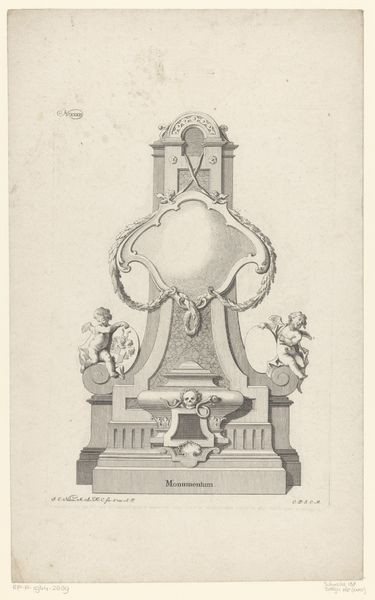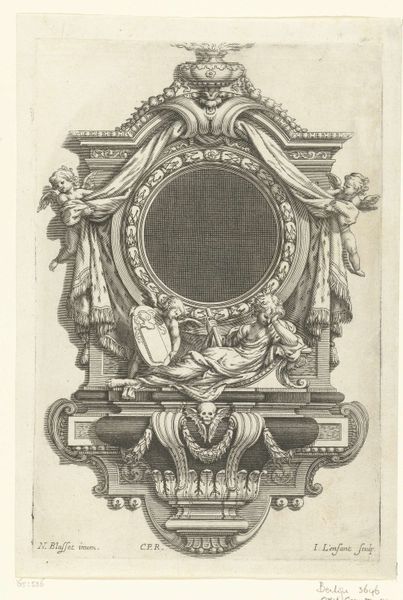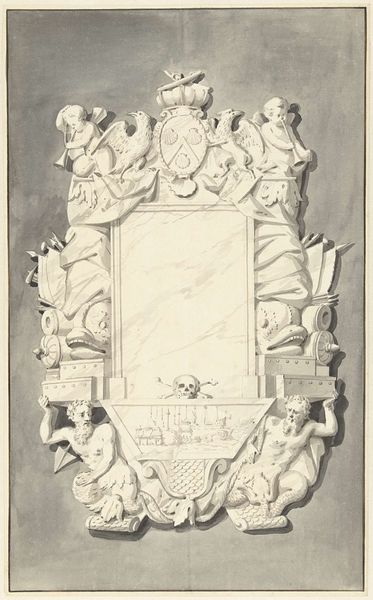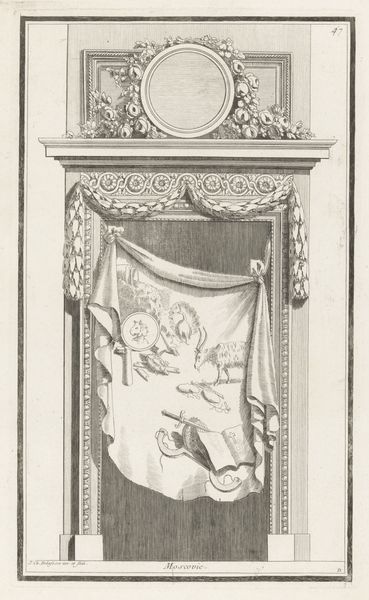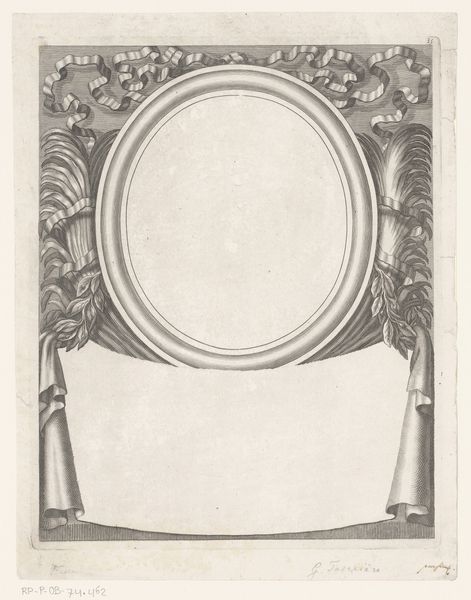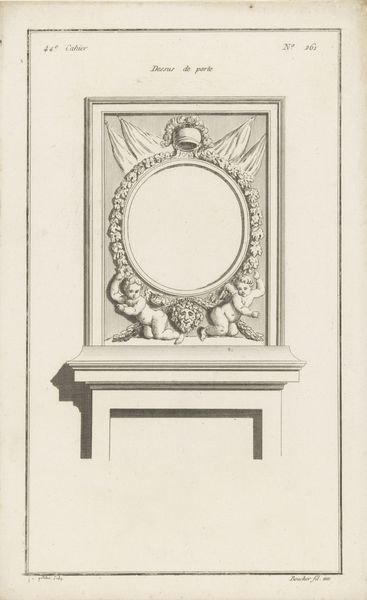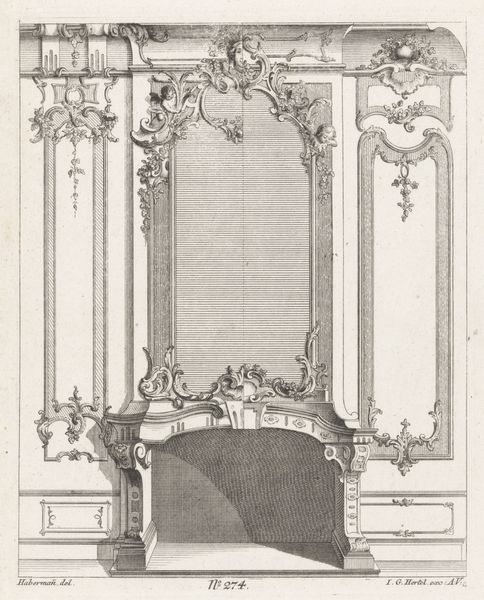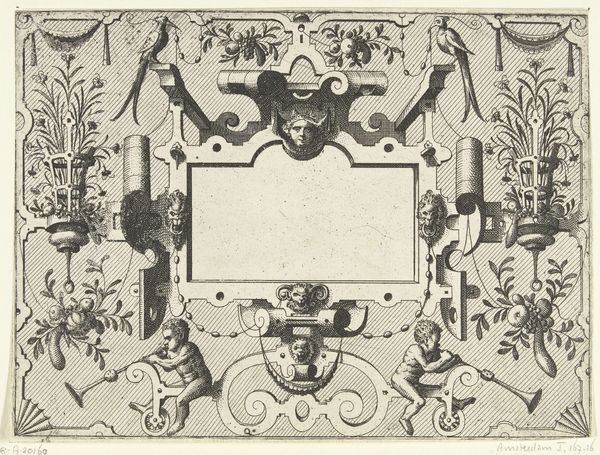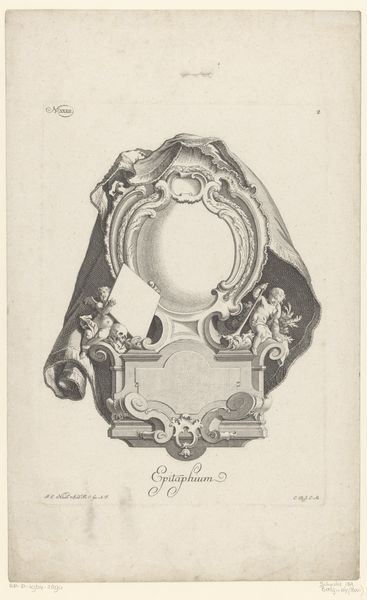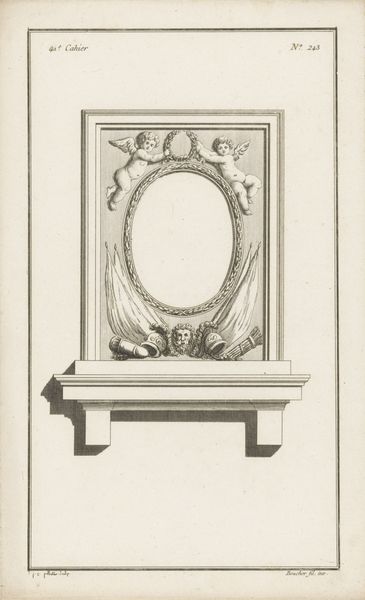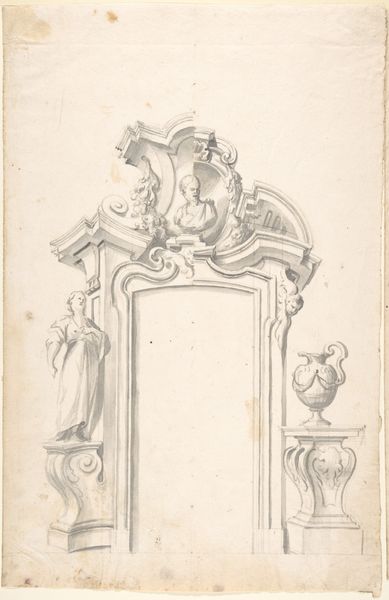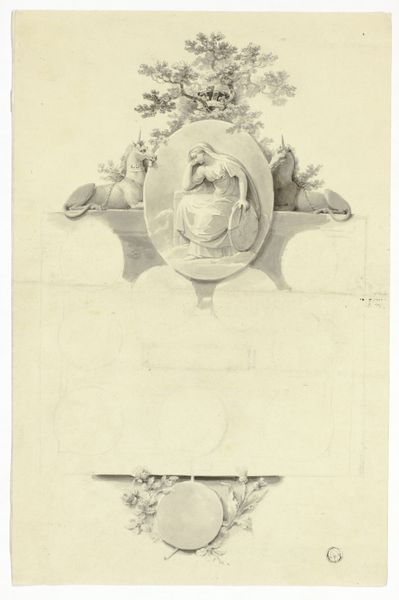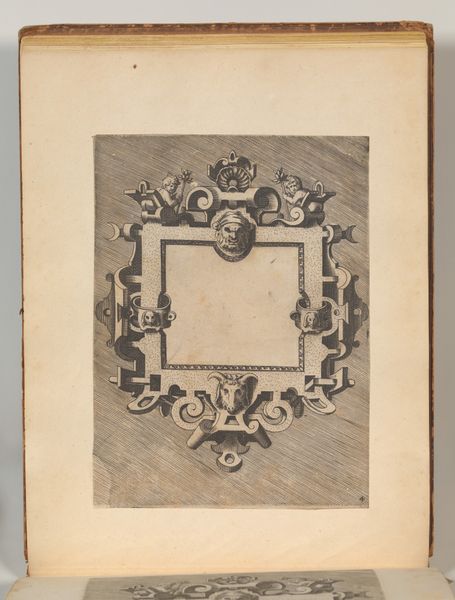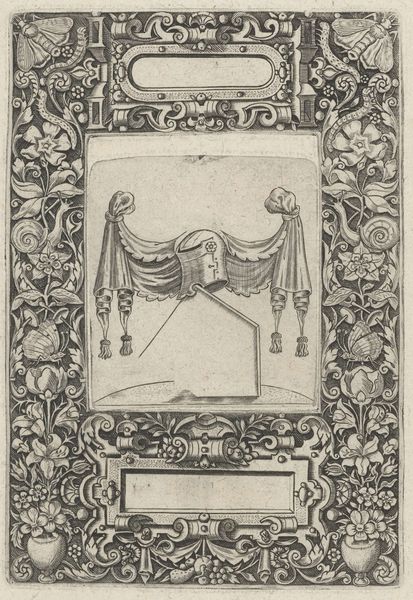
drawing, print, engraving
#
drawing
#
baroque
# print
#
engraving
Dimensions: sheet: 8 1/8 x 5 3/4 in. (20.6 x 14.6 cm) plate: 7 7/8 x 5 7/16 in. (20 x 13.8 cm)
Copyright: Public Domain
Editor: This is the title page of "Della Guerra di Fiandra" by Guido Bentivoglio, engraved by Claude Mellan in 1632. It's beautifully ornate; the Baroque style is evident in the decorative elements framing the central space. The cherub at the top almost feels like it’s observing something grand about to be revealed. How do you interpret its visual and historical context? Curator: What strikes me is how this title page serves as a point of entry into a specific historical narrative – the War in Flanders. Consider the role of engravings in the 17th century. This wasn't just decoration; it was a public statement, a way of framing historical events and shaping public opinion. Mellan, known for his technical skill, leverages the medium to lend a certain authority and prestige to Bentivoglio’s account. It makes you wonder: how did the visual rhetoric of Baroque title pages influence perceptions of historical events at the time? Editor: So, it's not just about aesthetic pleasure, but about the political power of imagery? Curator: Precisely. Think about the intended audience – learned individuals, members of the nobility. This print wouldn’t have been cheap, meaning it would circulate among a select group. The imagery, replete with symbols, functions almost as an initiation, signaling inclusion within a cultivated, politically aware circle. The putto, for instance, isn’t just a cute baby, it also suggests divine providence. Does the prominence of decoration perhaps subtly argue for the justness of the war effort? Editor: That's fascinating. I hadn't considered the cherub as a symbol with political weight. I guess it is a testament to how visually rich this seemingly simple engraving really is. Curator: Indeed. Mellan’s title page illustrates the way art engages with and actively shapes socio-political narratives. Next time, when you come across an ornate design, consider its historical backdrop and how that visual shapes the broader conversation surrounding this book. Editor: I definitely will. Thanks for your insights!
Comments
No comments
Be the first to comment and join the conversation on the ultimate creative platform.
